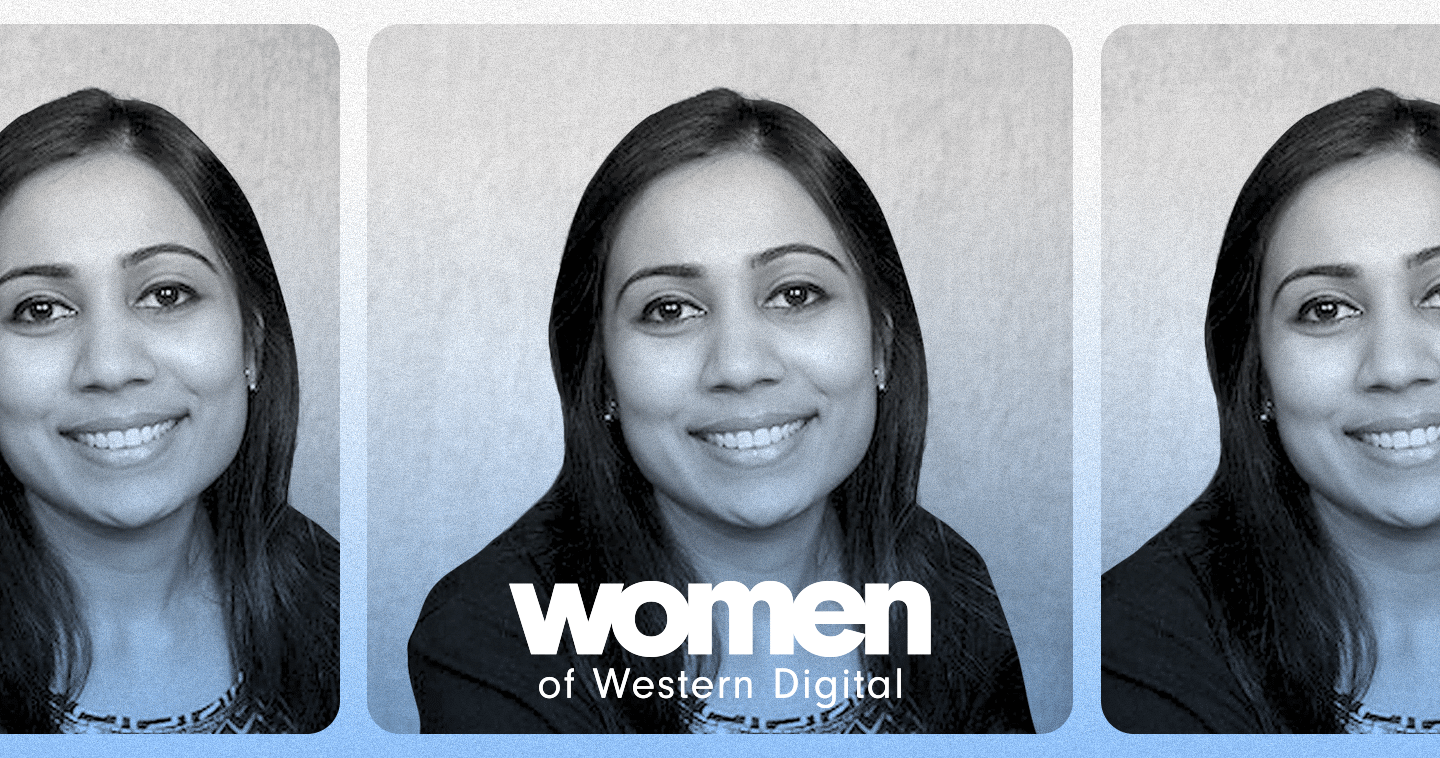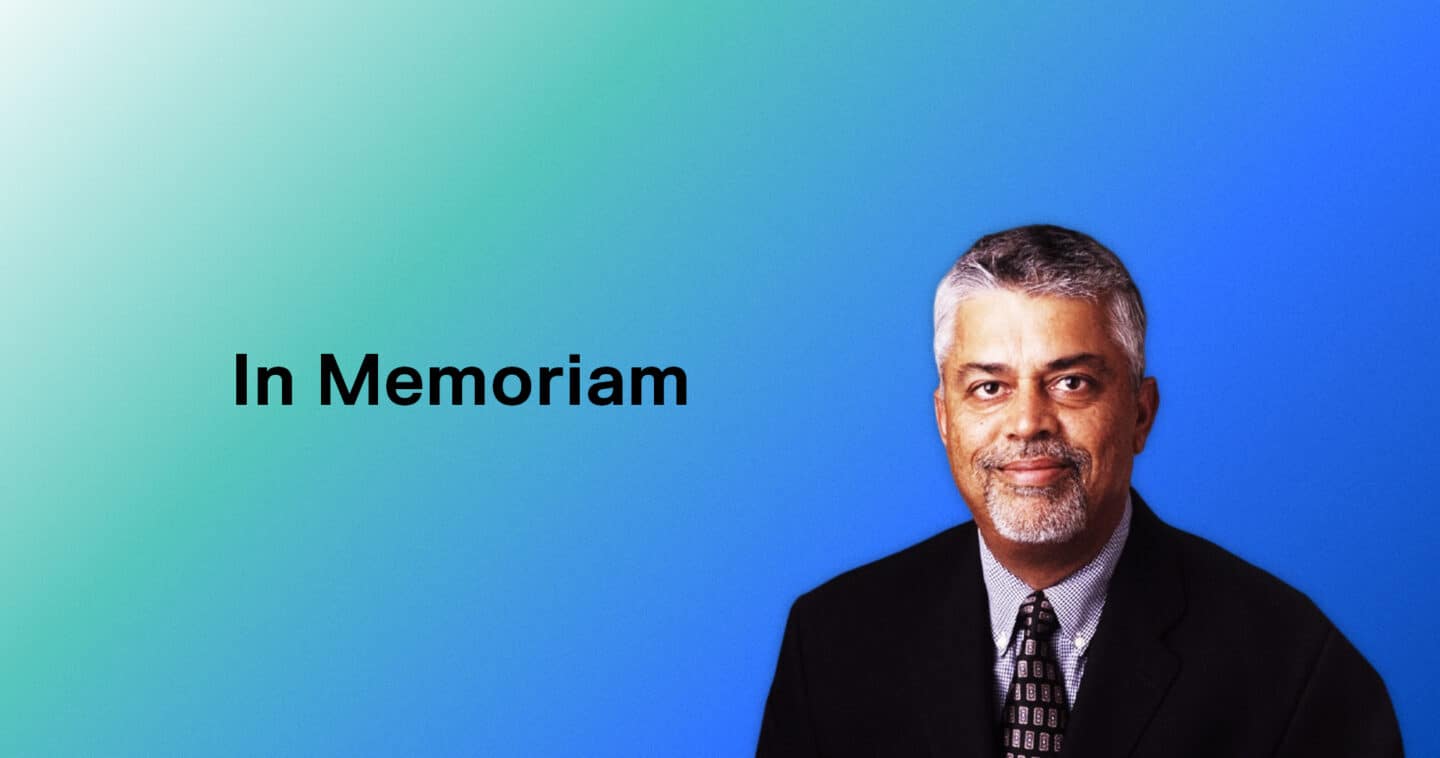Nimisha Morkonda Gnanasekaran: A Trailblazing Data Scientist
Nimisha Morkonda Gnanasekaran knew she wanted to be a data scientist at a young age. She was fascinated by artificial intelligence (AI) long before it became the hottest buzzword in technology.
She grew up in southern India, in a small town with a mountainous landscape much like her current home in Colorado. Her mother, whom she credits as her first mentor, was a financial advisor in a male-dominated industry. Playing on the floor as a toddler and hearing her mother on the phone with clients are among her earliest memories.
“She fought through gender challenges back then,” Morkonda said. “She was a rebel in a lot of ways, and she became a successful entrepreneur by building a brand for herself as a financial advisor in the town where I grew up.”
Her father was a mechanical engineer. She would accompany him to work, gaining insight into the engineering field, going to science fairs, and witnessing companies sharing their prototypes.
On the weekends, her family had a routine of going to the library. One day she saw a poster of a robot working with machines. It seemed so futuristic at the time. There, she decided this is what she wanted to do.
A minority in the field
There weren’t any colleges in India offering a degree in AI at that time. So Morkonda left her home country for the first time to attend the University of Reading in the U.K. She experienced culture shock when she realized she was one of only two women in a class of 80 students.
“I didn’t quite expect it and that’s when I realized gender bias was not something that was just specific to India,” she said.
She earned her degree in computer science and cybernetics, which is a combination of AI and systems engineering. She went on to earn a master’s degree in computer science with specialization in neural networks and neuroscience from the University of Colorado. When she was first applying for jobs in the late 2000s, no one she spoke to knew what AI meant.
“I got my degree in AI before all this hype happened,” Morkonda said. “Every time I applied for a job, the recruiter would call and ask, ‘What is this degree you’re mentioning?’”
She landed her first job as a software engineer because that’s where the jobs were—software development and web development were in demand at the time. She was challenged to navigate being a gender minority in her first job and working on a hybrid team where not everyone was in the same location. She quickly mastered the ability to get her ideas across and how to showcase her capabilities.
“At some point at that first job, I realized I shouldn’t place gender as a hindrance and just put it in the back seat,” Morkonda said. “Instead, I focused on letting my capabilities and skillset speak for itself and stand out before gender comes into the picture.”
Data science solves problems at scale
After years in software development, followed by some as a reliability engineer, she made her way back to data science at Western Digital with her passion for AI. Today she is director of data science where she leads the company’s data science team within the HDD product quality and reliability organization. She and her team identify AI data science-based solutions to business problems.
“Our work fits right into Industry 4.0 with Western Digital participating in the Lighthouse network, where we use advanced AI/ML technologies to drive operational efficiency wherever feasible,” Morkonda said.
Her team uses proactive solutions to help identify failures earlier in product life cycles. They also perform root cause analysis at scale for the millions of drives the company manufactures. Currently her team is exploring how to use large language models (LLMs) to augment the workforce so they can drive faster time to insights and thus faster time to market.
She feels lucky to work at a company with a supportive team. Here, she can focus on what she brings to the table as a contributor to an award-winning Industry 4.0 leader.
“I think the workplace matters a lot in finding the right team and the right place that can recognize your capabilities,” Morkonda said.

Mentorship: Giving back and paying it forward
While her mother was her first mentor, Morkonda believes a woman in technology needs not just one but a network of mentors from three distinct groups: those she can draw inspiration from, those she can inspire, and those who are in the same boat, whether it be career or personal situation.
“I think of these three groups as my source of energy and support. Depending on what I’m dealing with, I tap into each of those networks where I see applicable,” Morkonda said.
She pays it forward with her involvement with universities and science fairs as a judge. She’s an advisor to the Strategic AI program at the University of Colorado, Colorado Springs and sees it as a way to align the industry with the education system.
“The closer they are connected, the better the education system can deliver what’s required in the industry,” Morkonda said. “The lesser the gap, the more efficient we’re able to tailor talents and guide the talents in the appropriate fields.”
At a recent science fair, she reports two of the top three winners were women.
“To see them fly without limitations and execute what they want at that age is very encouraging,” Morkonda said.
She also serves as a mentor to STEM graduates and is very involved with a nonprofit organization that helps identify underprivileged women in India who have financial struggles. For the past 11 years, she has helped sponsor education for several women to get high school diplomas and undergraduate degrees. Financial aid and mentorship help these women find jobs and establish financial and intellectual independence.
“I see these aspiring girls who have a lot of dreams at the high school level but face a lot of uncertainty,” Morkonda said.
She gets to see them transform into confident adults who have jobs, access to their own finances, and feel much more empowered to make decisions.
“I think that (seeing) that transformation is one of the most fulfilling things I do,” Morkonda said.
Driving AI forward
Today, people know what AI is when Morkonda talks about her occupation. Although AI may seem like an overnight phenomenon, she says it’s based on centuries-old learnings and there has been research around LLMs for two decades.
“I think the biggest transformation happened with our ability to compute at a higher capacity. That’s been a big gating factor for transformation of whatever successful experiments happened in the field of AI,” Morkonda said.
She’s excited to be a part of this transformation and working in storage, which is crucial to the AI wave and what comes next as illustrated in Western Digital’s AI Data Cycle, where society will need to store all the AI data that’s being generated.
As the AI Data Cycle continues its evolution, she sees more women in the field, and she is right there to help them shine.
“In the evolving technology landscape, thriving is not merely about surviving in the right field,” Morkonda said. “It’s beyond that: it’s about flourishing, being able to adapt, and making a meaningful impact.”
And on that note, Morkonda was just named one of the Top 50 Women of Impact by the Women Impact Tech organization. The Top 50 Women of Impact are at the forefront of empowering the next generation of women in the tech industry to flourish.
Artwork by Rachel Garcera




